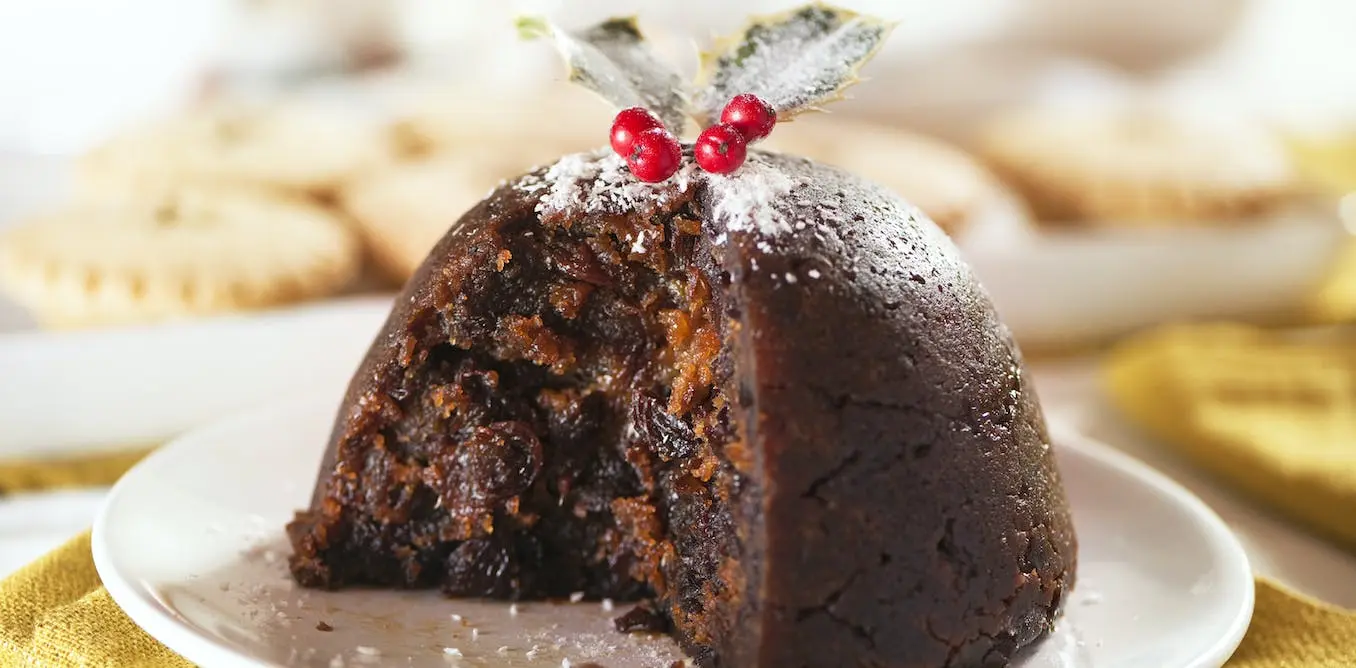As an American living in Britain in the 1990s, my first exposure to Christmas pudding was something of a shock. I had expected figs or plums, as in the “We Wish You a Merry Christmas” carol, but there were none. Neither did it resemble the cold custard-style dessert that Americans typically call pudding.
Instead, I was greeted with a boiled mass of suet – a raw, hard animal fat this is often replaced with a vegetarian alternative – as well as flour and dried fruits that is often soaked in alcohol and set alight.
It’s in no danger of breaking into my top ten favorite Christmas foods. But as a historian of Great Britain and its empire, I can appreciate the Christmas pudding for its rich global history. After all, it is a legacy of the British Empire with ingredients from around the globe it once dominated and continues to be enjoyed in places it once ruled.



Why do Americans call that pudding? It’s unclear how the two language varients diverged on this.